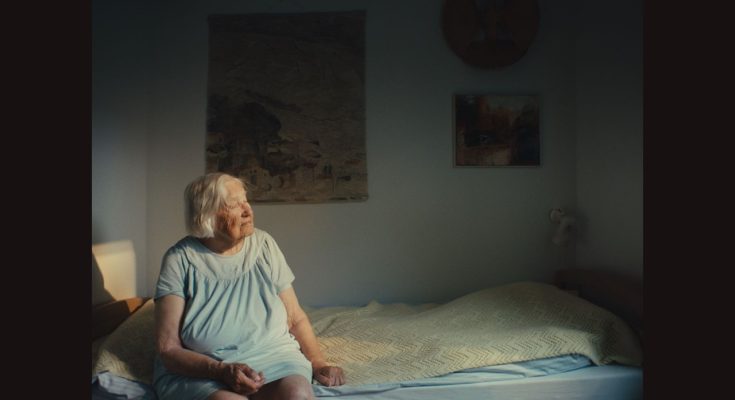CMEDIA: Generally being told as one-sided stories, since one partner almost always outlives the other, life-long relationships are presented in 2024 Documentary Film, ‘Echoof You’ by an ensemble of Danish men and women aged 80 and up who offer their collective experience of losing their person, and the life that continues without them.
Director Zara Zerny shares with Asha Bajaj, Editorial Director of Canadian Media on the sideline of “Echo of You” heartache and loneliness at times these individuals feel while also detailing what it means to live fully with memories.
Following is the excerpt of the interview:
Q: What motivated you to make this film, and what interested you in talking about this topic? There are nine different characters: were these people already known to you and how did they come to be part of the film?
Zara Zerny (ZZ): In 2015 I made a short film, where I was at a nursing home with a lot of old women in their 90s living there. They all thought that they would die when their partner had died, and when that didn’t happen, they thought they hadn’t loved him enough.
Somehow death became a love declaration and about travel. They were very excited about dying. It wasn’t like something they feared, and I found that very, very interesting.
And then before I was allowed to make a film and get money, years passed, and they of course passed away. And when I finally got to make this one, due to the outbreak of Corona virus I couldn’t get into the nursing homes. I wanted to have a portrait about them, and their long life partnerships, and how I found them. It was a long process.
The film took over three years, in which filming, casting and editing were done simultaneously and was not traditionally developed. Everything was going in and out of each other.
Every time we approached someone with the idea of filming about the older generation, they had somebody that they really care about and have an interesting story about. Some of them are my friends’ grandparents, found them from grief groups, and from a union in Denmark for older people. I interviewed more than 50 to 80 people.
Q: I observed that there are a lot of talking heads in the film, yet this is not a talking heads film. Why did you decide to leave the interviews to camera? What was your creative process around that?
ZZ: I incorporated artistic language to this film. I went to the Art Academy before I went to the film school, and when you do fiction you’re not allowed to play as much. When we were doing this film, I really wanted it to be a film about not the traditional story about old people. We don’t talk enough about this generation or with them. And I didn’t want it to be this documentary about how hard it is to get old.
Every time I talked to them, I wanted to show the life that I felt was still in them and that they still were living and co-living in their memories. So the process was like a conversation with them and then trying to translate that into a visual language. Also the music plays a big role and it was a pleasure to try to do this.
Q: Were there any questions that they were very excited to answer or some that they resisted to?
ZZ: The questions were actually very easy to ask. It was very easy to ask them direct questions about their lives. For me, it was very difficult to ask sexual questions. And I think I took some time before I felt I was going to ask these. I was really shocked when I met Inge 97, and she had an open relationship.
For me, the resilience was for the dancing, the showers as they wondered what does this have to do with grief? But every time we did it, they heard music, feel something happened to them. So it was a small exercise.
I also tried to do this while holding their eyes. Some of them thought I was hypnotizing them. Some of them thought I was making fun of them. And some really enjoyed it. So it was also to show how different characters do, or handle different assignments in a different way. They’re not used to going to therapy or talking about these things. I think they were very good and were very open.
Can you talk about the trust you built with these characters?
ZZ: Well, I met everybody before we filmed. I’ve been filming everybody on my iPhone and doing some exercises with them. And three of us, the photographer, me, and an assistant made the selection and I would ask them the same questions.
The good thing about this generation is they tell the same stories about the memories, exactly the same way each time, using the same words. Gaining their trust was also not difficult. I was just really asking direct questions. I think at their age, they are not thinking of infidelity. So it’s not difficult for them to talk about. A lot of their families didn’t know these things before. Because I just seriously think they just didn’t ask. They also knew a lot about me as well. So it was not a one way interview.
Q: You kind of hinted that being much younger, it was a journey for you. So what was your usual instinct? What were the classic questions you needed to ask yourself?
ZZ: I hate questions like who is your film for, for which age group? I think this film is for everybody, all age groups. and very much for younger people as well, because it reflects a lot about your own parents or your grandparents, but you also think about where do you want to be when you’re 90? And I think this has really, for me personally opened up a lot of the things that I worry about or the quarrels with my partner or my children.
After meeting them, I often ask myself if I would think about this when I’m 90 or 80? So somehow it opens or broadens the perspective in a different way and younger people gain a lot from it. It hurts them a lot to see this.
I think people are scared of getting older. And I think a lot of people also, including my mother, cried while working in a hospice. She’s worked with people dying a lot, and really cried about it because she thought who would talk about her when she is at that age? That really is something we reflect on.
Q: What is the creative approach and the different elements used to texturize the film, and your script?
ZZ: There are three layers in the film, the interviews, the stories of each character, and then there’s the exercises like the dancing, the holding the eyes that they all do. And then there’s the stories of each individual. So a lot of the visual images were also inspired by their stories when I got to know them.
For example, the woman who talks about dreaming about her death, I could immediately see this image as she was very specific in describing her. Some of them are of course very individual. The woman who bikes in front of her house, she really wanted to go back to her house, and we couldn’t take her.
And when I went there and filmed the roads around her house, I was actually shocked how these really affected. The visual language involved both of us translating these stories. We also inspired them in different visual ways of storytelling. The interviews and the stories told by them was a mix.





